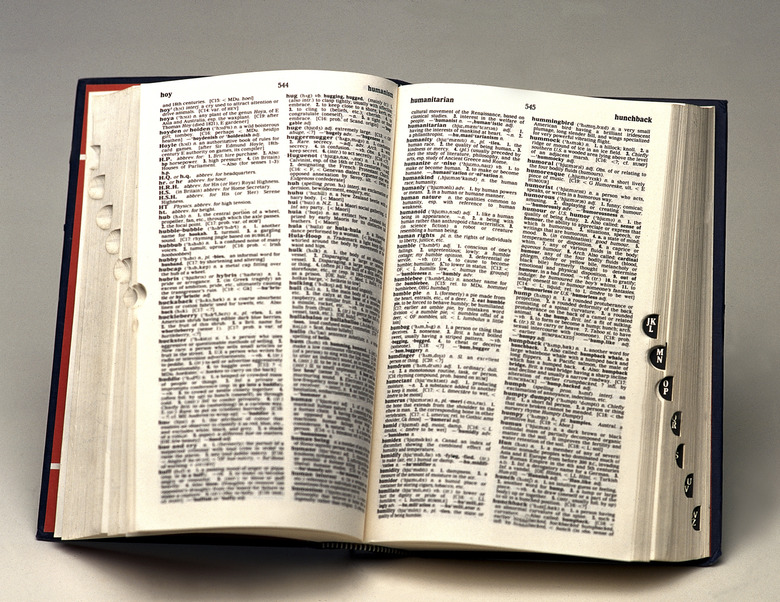What Are The Characteristics Of A Homozygous Phenotype?
The true story lies in your genes. You may have brown eyes, or red hair, or long fingers. Many of your traits were inherited from your parents, but the exact way that happened cannot always be known by your appearance. The combination of genes you received is your "genotype," but how they show up is your "phenotype." Sometimes parents contribute different versions of a gene, and sometimes they are identical. These variations are a huge part of what makes you, and all organisms, individuals.
One from Each
One from Each
An organism's genes are made up of molecules of the chemical DNA. These genes are arranged in structures called chromosomes, which contain all the genetic instructions needed for the organism's life processes. Each parent passes along one gene for every inherited trait. Genes can have two or more variations or "alleles." For example, a pea plant has two alleles for height: tall and short. In humans, blood type has three possible alleles: A, B and O. Although the environment plays a part, your phenotype depends a great deal upon which alleles your parents contribute.
Same or Different
Same or Different
If both parents pass along the same allele for a gene, the trait is "homozygous." If the alleles are different, it is "heterozygous." A homozygous trait will usually appear in the organism. If a pea plant receives two alleles for tallness, it will have a long stem. On the other hand, if it gets two "short" alleles, it will not grow much. A person whose parents both gave B blood type alleles has that kind of blood. For a specific trait, the genotype is homozygous or heterozygous, but the phenotype is identified by how it is expressed, such as a tall stem or B blood type.
Spell It Out
Spell It Out
In discussions of genotype, alleles are typically identified by letters. Capitals are used for alleles that are dominant. A dominant allele is often expressed even if the other allele is different. Lowercase letters indicate recessive alleles. These usually will not show up unless both alleles are the same. For instance, one homozygous genotype for pea plant height is TT, which means it will have the phenotype "tall." Genotype can also be homozygous for recessive genes as well. A short phenotype has the genotype tt.
Playing It Out
Playing It Out
Homozygous genotypes are visible in the phenotypes of many organisms. However, because some genes are dominant, you can know for sure that a trait is homozygous only if it is recessive. For example, some members of a cattle species many have black coats: BB or Bb. The red ones are bb. Short-haired cats may have a dominant homozygous genotype, SS, or they could be heterozygous, Ss. The long-haired phenotype is a homozygous ss. Not all inherited traits are harmless. For example, cystic fibrosis is a serious genetic lung disease. The non-disease allele is dominant, A, so the phenotype for someone without CF is AA or Aa. However, if an individual inherits two recessive genes, aa, that person will have the disease.
Cite This Article
MLA
Sherwood, Susan. "What Are The Characteristics Of A Homozygous Phenotype?" sciencing.com, https://www.sciencing.com/characteristics-homozygous-phenotype-20641/. 24 April 2017.
APA
Sherwood, Susan. (2017, April 24). What Are The Characteristics Of A Homozygous Phenotype?. sciencing.com. Retrieved from https://www.sciencing.com/characteristics-homozygous-phenotype-20641/
Chicago
Sherwood, Susan. What Are The Characteristics Of A Homozygous Phenotype? last modified August 30, 2022. https://www.sciencing.com/characteristics-homozygous-phenotype-20641/
